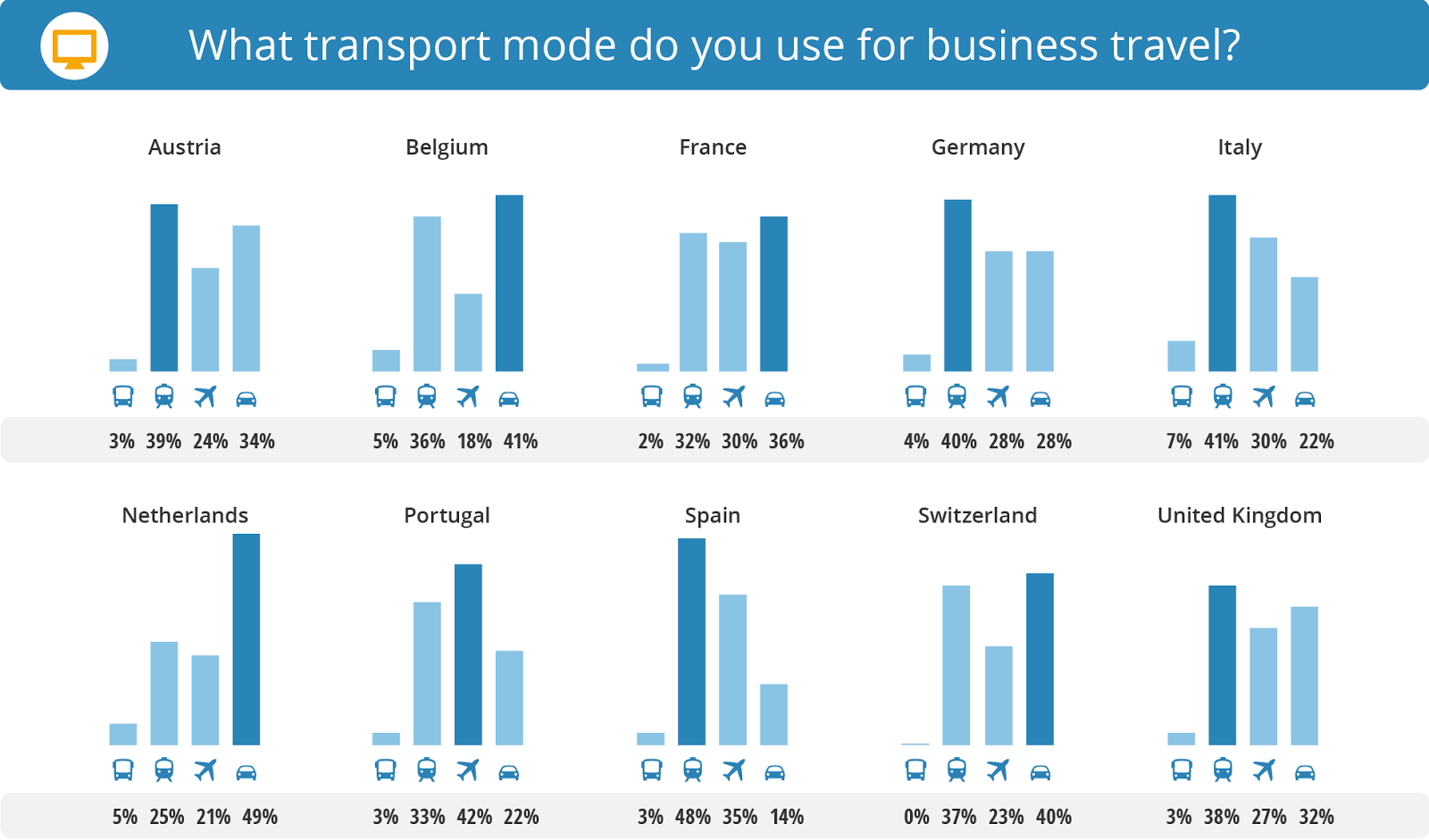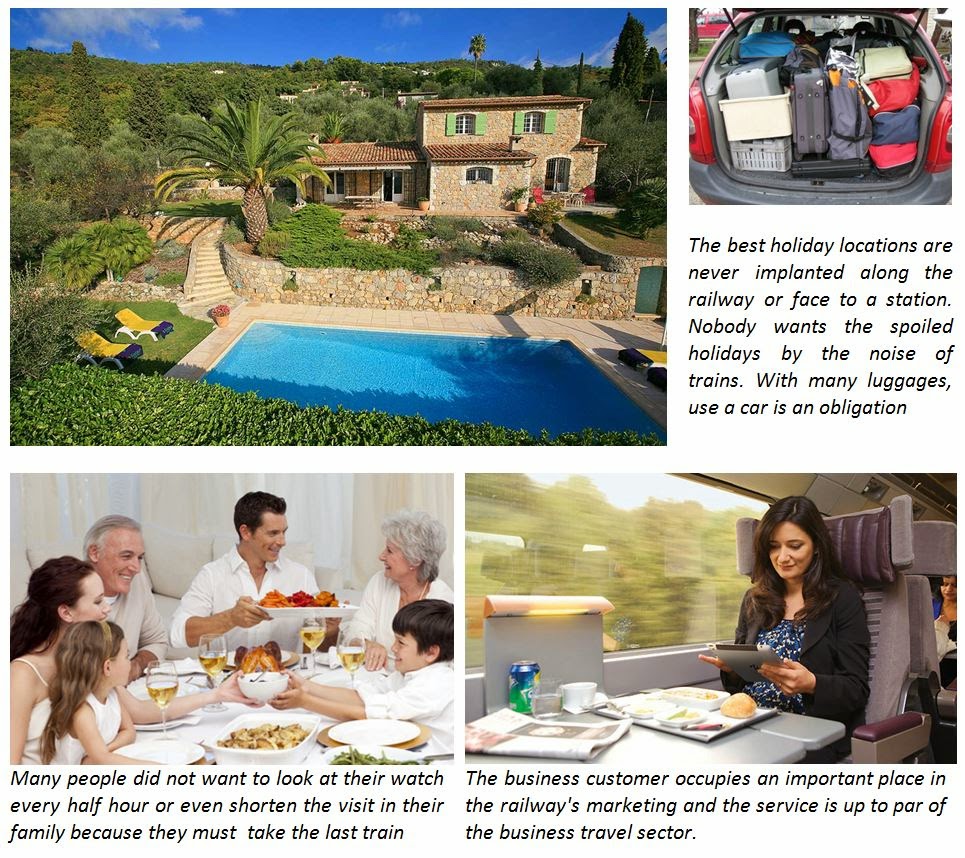Few people take the train to go on holidays
Analysis of Mediarail.be - Signalling technician and railways observer
See also the Trainworld on facebook of Mediarail.be, also Twitter and LinkedIn
16/04/2015
It is not really scientific, but that shows certainly a reality. GoEuro is a travel metasearch engine which allows users to compare the price and journey time of air, rail and bus travel options. Regularly, the Berlin's based company provides surveys about the travel consumption habits in Europe. The last one shows the modal share of airplane, cars, buses and railways, as shown below. We can see that, as might be expected, the railway is globally the last choice of the travelers.
GoEuro differentiates three travel sectors:
family, business and holydays. Without surprise, holidays are the poorest sector
of railways, not only because many night trains have disappeared, but because
there are the necessity for many people to move during their stay. The visit is
also part of a vacation and the car rental remains for most people a option
very expensive. Secondly the best
holiday locations are never implanted along the railway or face to a station.
Nobody wants the spoiled holidays by the noise of trains! Thirdly, some
constraints are better accepted when the travel is made by airplane than by
railways (weight of luggage, a stronger presence in the hotel, scheduled
excursions...). Lastly, the airliner's prices are today comparatively cheaper
than the best railway prices and the airplanes bring tourists more far away for
many guaranteed sunny destinations. In this context, the poor use of train for
holidays is not a surprise.
The same analysis can be made with the
familial sector. How many people have precisely a family member who lives near
a station? Many people did not want to look at their watch every half hour or
even shorten the visit because they must take the last train. Some itineraries
take the double time than a car, or are simply impossible by train. This is the
main reason of the poor use of train for private reason.
The third sector seems to feel better. And
this is also not a surprise. The business customer occupies an important place
in the railway's marketing. For at least a good reason: the revenues collected.
The tickets are indeed not individually paid but by the employer. The more
expensive fares seem far less scary because the service is up to par of the
business travel sector, with coffee or meals included. That is what has been
successful of Eurostar, Thalys, the spanish AVE or NTV-Italo, for example.
That's the reason of the good margins maintained in this sector where Eurostar
has, for example, more than 75% of the modal share between London and the
Continent.
------------------------------------------------------------------------------------------------------------------------------------------------------



